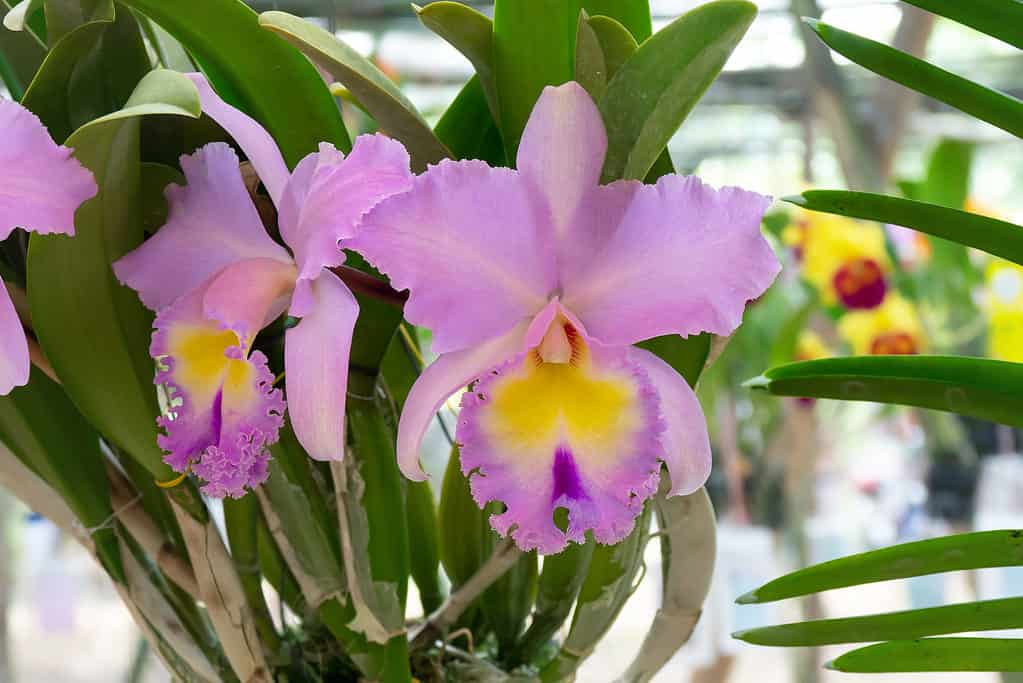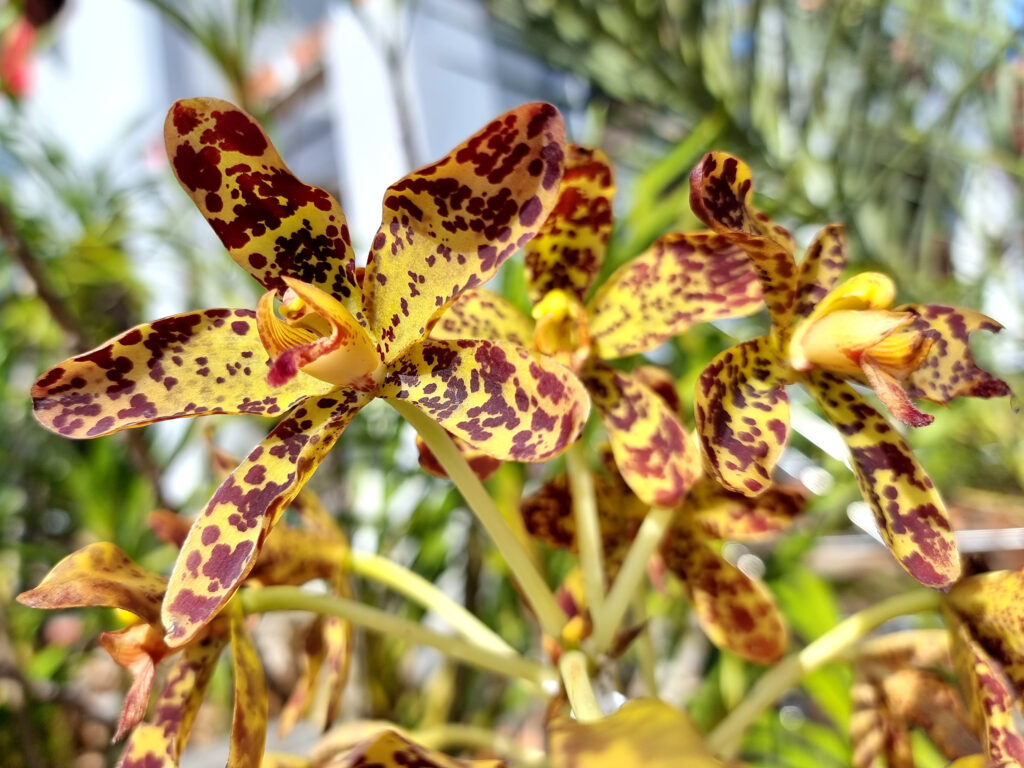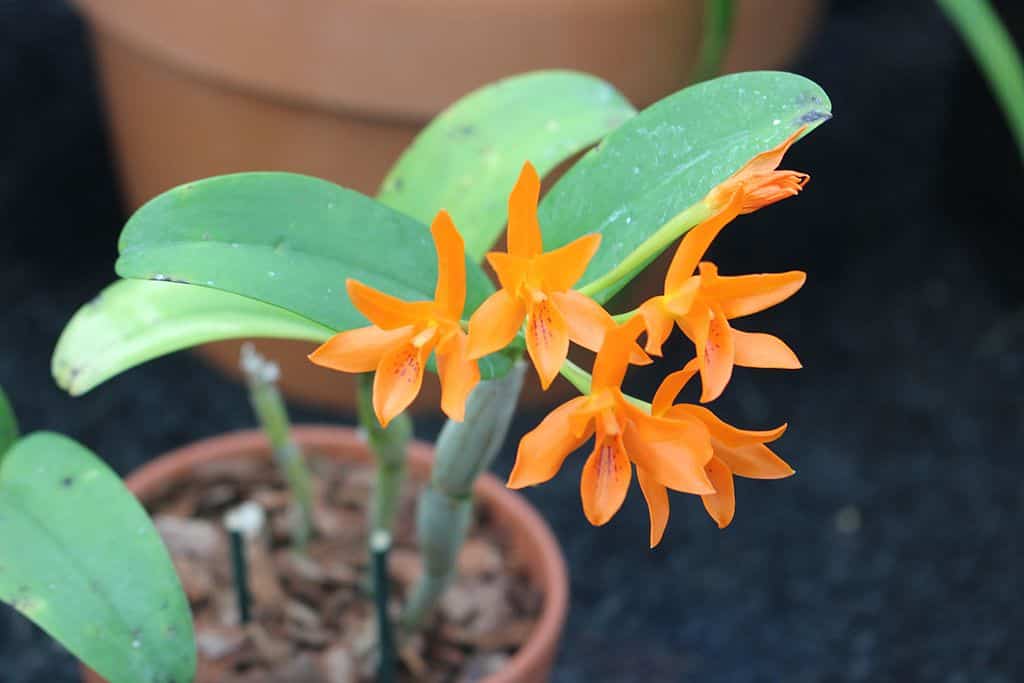If you’re interested in growing orchids, you may be wondering how big these plants get. Generally, orchids don’t take up much space and many species are excellent candidates for growing indoors in small spaces. With almost 30,000 orchid species and thousands more cultivars and hybrids, you’ll assuredly find excellent options for your growing environment.
In this guide, we’ll cover the botanical classification of orchids and then discuss some of the smallest and largest orchids in the world, the size ranges of a few commonly cultivated species, and care considerations to support healthy growth.
Alright, let’s jump in!

Generally, orchids don’t take up much space and many species are excellent candidates for growing indoors in small spaces.
©iStock.com/wisan224
Orchids: Botanical Classification
Representing the most diverse flowering plant family on Earth, Orchidaceae is a powerhouse of a botanical family, currently containing 28,000 species across 880 genera. These plants are beloved around the world for their stunning, unique blooms and interesting growing habits.
Emerging almost 120 million years ago in the tropics of Asia, orchids now grow natively on every continent except Antarctica. Tropical, subtropical, and temperate species exist with some species growing as terrestrials in Alaska while others cling to the trees as epiphytes in tropical rainforests.
Today, over 80% of all orchid species are epiphytes native to tropical and subtropical regions of the world.
How Big Do Orchids Get?
The question of orchid size is highly dependent given the incredible diversity of the Orchidaceae family. Below, we’ll look at some of the smallest and largest orchids in the world, as well as a couple of size ranges of commonly grown genera.
Smallest Orchids
The smallest orchid species tend to appear in mountainous cloud rainforests of Central and South America. One such species is Lepanthes oscarrodrigoi, an epiphyte native to the cloud forests of Guatemala. This tiny orchid is one of the smallest in the world, producing minuscule blooms about 0.02 inches (0.5mm) across with leaves maxing out at 0.2 inches (5 mm) across and 0.22 inches (5.5 mm) long.
A similarly itty bitty orchid species is Campylocentrum insulare, found in the Brazilian cloud rainforests. Scientists initially mistook the tiny blooms of this epiphytic orchid as a fungus growing on the host plant until they examined the orchid under a microscope.
Largest Orchids
On the other end of the spectrum of size diversity are the largest orchids in the world. Currently, an epiphytic orchid native to Southeast Asia and the Philippines, Grammatophyllum speciosum, also known as the tiger orchid, takes the title of the world heavyweight champ. This giant lad can weigh up to a ton, it produces about 80 blooms per plant, and the pseudobulbs alone can grow up to 6 feet tall.

The tiger orchid (
Grammatophyllum speciosum) is the largest orchid in the world.
©iStock.com/Rungroj Nuiman
How Big Orchid Plants Get: Average Sizes of Three Commonly Cultivated Species
Orchids that are commonly cultivated tend to grow well in indoor environments, with maximum heights and spreads that are easily accommodated indoors.
Phalaenopsis schilleriana is a widely popular phal species that grows to a manageable size for indoor use. This lovely epiphytic orchid produces flowers about 4 inches across that emerge in the spring on arching stems up to 36 inches long. The leaves of this well-loved species can grow up to 18 inches long.
Cattleya mossiae, or the Easter orchid, is a popular epiphytic species of cattleyas that features large, showy blooms 5-8 inches across. The flowers appear on stems that typically reach up to 20 inches tall.
Mottle-leafed paphiopedilums are warm-growing terrestrial orchids often cultivated for both their stunning foliage and blooms. Paphiopedilum wardii is a naturally occurring hybrid species that is easy to grow and produces gorgeous medium-sized blooms on 8-inch-long stems. The shape of the 4-inch flower is characteristic of a lady’s slipper orchid with its pouch-like labellum.

Commonly cultivated orchids such as as
Phalaenopsis schillerianagrow well in indoor environments.
©PAUL ATKINSON/Shutterstock.com
Care Considerations for Healthy Growth
Generally speaking, orchids don’t tend to produce bushy foliage, with some species being entirely leafless. Most cultivated orchids don’t produce stems taller than 36 inches, and leaves don’t tend to grow more than 12 inches long. So, don’t fret much over providing room for outward growth for most of the commonly cultivated species. Instead, you’ll want to ensure you provide the best growing conditions to encourage healthy foliage development and abundant blooming.
If you notice that your plant isn’t growing as fast or as much as is normal for its species, you’ll want to troubleshoot by re-checking its growing conditions. A lack of light, water, aeration, and fertilizer can all cause stunted growth. You may also find that the pot is too restrictive for the orchid, or that you’re not allowing your epiphyte space to fully extend its root system. Care for orchids can vary significantly from species to species, so always research the specific growing guidelines to help your plant thrive and reach its maximum size.

Orchids don’t tend to produce bushy foliage, so outward growth for most of the commonly cultivated species is limited.
The photo featured at the top of this post is © iStock.com/JillianCain
Thank you for reading! Have some feedback for us? Contact the AZ Animals editorial team.







